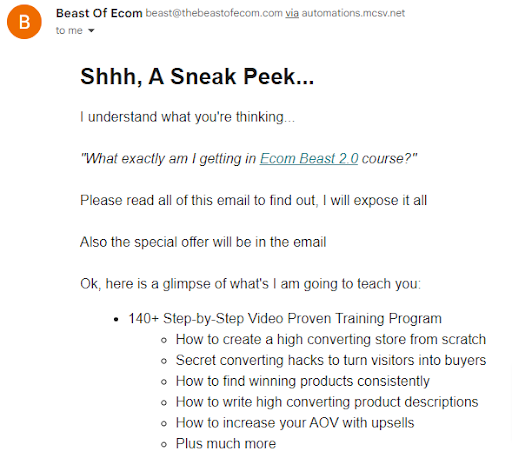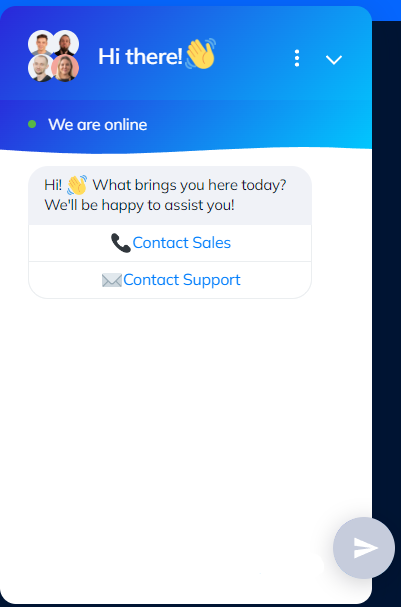Marketing Automation for Lead Generation: A Comprehensive Guide
Marketing automation is now crucial for businesses aiming to improve their lead generation. In fact, from 2021 to 2024, global marketing automation industry revenue is projected to grow by 38.2%, reaching $6.62 billion.
Wondering how you can use marketing automation for your business? This blog will explain what marketing automation lead generation is, how it helps in managing leads, and the benefits it offers.
We will also explore the role of marketing automation in lead generation and provide steps for implementation. By the end, you'll understand how marketing automation can streamline your process and improve your results.
What is marketing automation lead generation?
Marketing automation lead generation refers to using software and technology to automate your marketing tasks and processes to generate and nurture leads.
By using automated systems, you can attract, engage, and convert prospects into leads more efficiently and effectively.
What is lead management in marketing automation?
Lead management in marketing automation is a systematic process of capturing, tracking, nurturing, and converting leads using automated tools and software.
It guides leads through the sales funnel, from initial contact to final conversion. This increases the chances of turning prospects into customers.
Here is an example scenario:
For instance, if you are running a marketing campaign to promote your new software feature. Using lead management in marketing automation, you can:
1. Capture: Use an automated form on a landing page to capture visitor information when they download your marketing checklist.
2. Track: Monitor the lead's interactions, such as email opens and website visits, to measure their interest.
3. Score: Assign a lead score based on their behavior, indicating their chance of becoming a customer.
4. Nurture: Send a series of automated emails with additional resources and product information customized to their interests.
5. Qualify: Once the lead reaches a certain score, automatically notify the sales team that the lead is ready for a follow-up call.
6. Distribute: Assign the lead to the right sales representative based on their location.
7. Convert: The sales representative follows up with the lead, and provides detailed information about their interactions and interests, increasing the chances of closing the sale.
8. Analyze: Track the campaign to find what works and what needs improvement.
Benefits of marketing automation
Using marketing automation can improve your marketing efforts and provide many benefits. Here’s how it can help you:
1/ Efficiency and time-saving
Marketing automation streamlines your repetitive tasks, allowing you to concentrate on the strategic and creative elements of your marketing. For instance, with marketing automation, you do not have to manually send out emails or post on social media every day. Zendesk and its alternative apps can automate customer support tasks, saving you time to boost business ROI.
With automation, these tasks are handled for you, freeing up valuable time. You can set up campaigns in advance, schedule posts, and automate follow-ups, ensuring your marketing efforts continue effectively even when you're not actively working on them.
2/ Improved targeting and personalization
With marketing automation, you can segment your audience based on various criteria such as behavior, demographics, and past interactions. This enables you to deliver highly targeted and personalized content to each segment.
By providing the right message to the right person at the right time, you enhance engagement and improve your chances of converting leads into customers.
3/ Better lead nurturing and management
Marketing automation tools help you effectively nurture leads through automated email campaigns, personalized follow-ups, and customized content. You can track lead behavior, score their interactions, and move them through the sales funnel efficiently.
This ensures that your leads receive relevant information that guides them toward making a purchase decision, ultimately improving your lead conversion rates.
4/ Enhanced analytics and insights
One of the significant advantages of marketing automation is the ability to track and analyze your campaigns' performance in real-time. This allows you to monitor critical metrics like click-through rates, conversion rates, open rates, and ROI.
These insights help you understand what's working and what isn't, allowing you to make data-driven decisions and continuously optimize your marketing strategies for better results.
Role of marketing automation in lead generation?
Marketing automation plays a crucial role in your lead-generation efforts by streamlining processes and improving efficiency. With automation, you can:
1/ Automated lead scoring:
Lead scoring is a method used to rank prospects based on their interactions with your brand and their readiness to make a purchase. It assigns numeric values to leads based on criteria such as engagement level, demographics, and behavior.
Automation enhances lead scoring accuracy by systematically analyzing and tracking lead behavior across multiple channels. It ensures consistency in applying scoring criteria and reduces human error.
For instance, automation can instantly update lead scores based on real-time interactions like email opens, website visits, and downloads.
Examples of lead scoring criteria can include:
- Behavioral Engagement: Frequency of website visits, content downloads, and webinar presence.
- Demographics: Industry, company size, job title, and geographic location.
- Email Interaction: Open rates, click-through rates, and responses to email campaigns.
2/ Personalized email campaigns:
Personalized emails connect more with recipients because they address their specific needs and interests. Automation allows you to automatically insert personalized content, such as the recipient's name, industry-specific insights, or customized offers. This increases engagement and conversion rates significantly.
Similarly, automation also helps segment your email lists based on demographics, behavior, and preferences. You can create targeted campaigns that speak directly to each segment's interests and needs.
For example, you can send different emails to leads who have shown interest in different products or services.
Moreover, drip campaigns can also be used to nurture leads over time by delivering relevant content based on their stage in the buying process.
3/ Dynamic landing pages:
Dynamic landing pages adapt their content and offers based on the visitor's characteristics, such as their location, referral source, or previous interactions with your site.
Automation allows you to customize these pages dynamically, providing a personalized experience that aligns with each visitor's interests and needs.
For example, your dynamic landing pages can change headlines, images, calls-to-action, and even entire sections of content based on data about the visitor. Therefore a returning visitor might see different content than a first-time visitor, ensuring relevance and engagement.
4/ Social media automation:
Automation tools allow you to schedule social media posts in advance. You can plan your content calendar, line up posts, and automatically publish them at optimal times for maximum reach and engagement.
This saves you time and ensures that your social media strategy remains active and relevant. Automation also helps you monitor social media engagement in real time. You can track likes, comments, shares, and mentions of your brand or relevant keywords.
How do you do marketing automation?
Here’s a step-by-step guide to help you get started with marketing automation:
Step 1: Define your goals and objectives:
Decide what you want to achieve with marketing automation. This could include generating more leads, improving lead nurturing, increasing conversions, or enhancing customer retention.
An example of measurable objectives could be increasing email open rates by 20%, improving website conversions by 15%, or reducing lead response time by 30%.
Step 2: Choose the right marketing automation platform:
Evaluate different marketing automation platforms based on your needs. Consider factors such as features, integrations, scalability, and cost. Make sure to take advantage of free trials or demos to test the platforms and see which one fits best with your business processes and goals.
Step 3: Integrate your systems:
Ensure your marketing automation platform integrates with your Customer Relationship Management (CRM) system. This allows for easy data flow and better lead management.
Step 4: Segment your audience:
Collect data on your leads, including demographics, behavior, preferences, and past interactions. Divide your audience into segments based on criteria like industry, job title, engagement level, and buying stage. For each segment, design workflows that guide them through personalized communication and tailored touchpoints, ensuring more relevant interactions and higher engagement.
Step 5: Develop and automate campaigns:
1. Design Workflows: Plan out the customer journey and design workflows for different segments. This includes defining triggers, actions, and timing for each step of the campaign.
2. Create Content: Develop personalized content for your campaigns, such as emails, landing pages, and social media posts. Make sure the content matches the requirements and interests of each segment.
3. Set Up Automation: Use your platform to set up automated workflows. For example, create a drip email campaign that sends a series of emails based on lead behavior and engagement.
Step 6: Implement lead scoring and qualification
Define criteria for lead scoring, such as website visits, email opens, content downloads, and social media interactions. Arrange your platform to automatically assign scores to leads based on their behavior. Adjust scores dynamically as leads engage with your content.
Step 7: Monitor and analyze performance
1. Track Metrics: Use your platform’s analytics tools to monitor key performance indicators (KPIs) such as open rates, click-through rates, conversion rates, and ROI.
2. Analyze Data: Regularly analyze the data to gain insights into campaign performance and lead behavior. Identify trends and patterns that can influence your strategy.
Implementing marketing automation for lead generation
Here are some practical examples of implementing marketing automation to generate leads:
1/ Behavioral triggers:
Set up triggers based on specific actions taken by visitors on your website, such as viewing a product page multiple times. An automated email can be sent offering a special discount on that product.

Here's an example of a discount email from an e-commerce company offering a special deal exclusively through email.
2/ Social media automation:
Use automation tools to schedule and publish posts regularly on social media platforms. Consistent posting keeps your brand visible and encourages interaction.
You can also create targeted social media ads and use automation to manage ad spending and optimize performance.

Target social media campaigns
Use lead generation forms within the ads to capture contact information directly from social media.
4/ Chatbots:
Set up chatbots to greet visitors and ask qualifying questions. For example, "Hi! How can we help you today? Are you looking for product information, support, or something else?"

Based on their responses, the chatbot can guide them to the right resources or collect their information for follow-up.
5/ Retargeting campaigns:
Use automation to track visitors who leave your website without converting. Automatically display retargeting ads on social media or other websites they visit, reminding them of your products or services and encouraging them to return.

Retargeting ads on social media
Wrap up
In summary, marketing automation is crucial for enhancing your lead-generation efforts. It enables efficient attraction, engagement, and conversion of prospects efficiently while managing leads effectively through the sales funnel.
Automation tools can save time, improve targeting, nurture leads, and gain valuable insights to optimize your campaigns.
Implementing marketing automation, from defining goals to choosing the right platform and creating automated workflows, can transform your marketing processes and significantly improve your results.
Frequently Asked Questions
1. How successful is marketing automation?
Marketing automation has shown to be highly successful for many businesses. According to a study by Hubspot, companies that use marketing automation to nurture prospects experience a 451% increase in qualified leads. Additionally, automation can lead to a 14.5% increase in sales productivity and a 12.2% reduction in marketing costs.
2. What is a marketing automation strategy?
A marketing automation strategy is a complete plan that uses automation tools and techniques to streamline, manage, and optimize marketing processes and workflows. It aims to enhance efficiency, improve lead generation and nurturing, and deliver personalized customer experiences at scale.
3. What is CRM in marketing automation?
Customer Relationship Management, in marketing automation, refers to a system that helps manage a company's interactions with current and potential customers. Integrated with marketing automation tools, CRM systems streamline and enhance the lead generation and nurturing process by centralizing customer data, tracking interactions, and automating follow-ups.
4. What is lead scoring in marketing automation?
Lead scoring in marketing automation is a methodology used to rank prospects based on their engagement with your brand and their potential to become customers. By assigning numeric values to various actions (such as website visits, email opens, content downloads, and social media interactions), lead scoring helps you prioritize leads based on their behavior and demographics.







